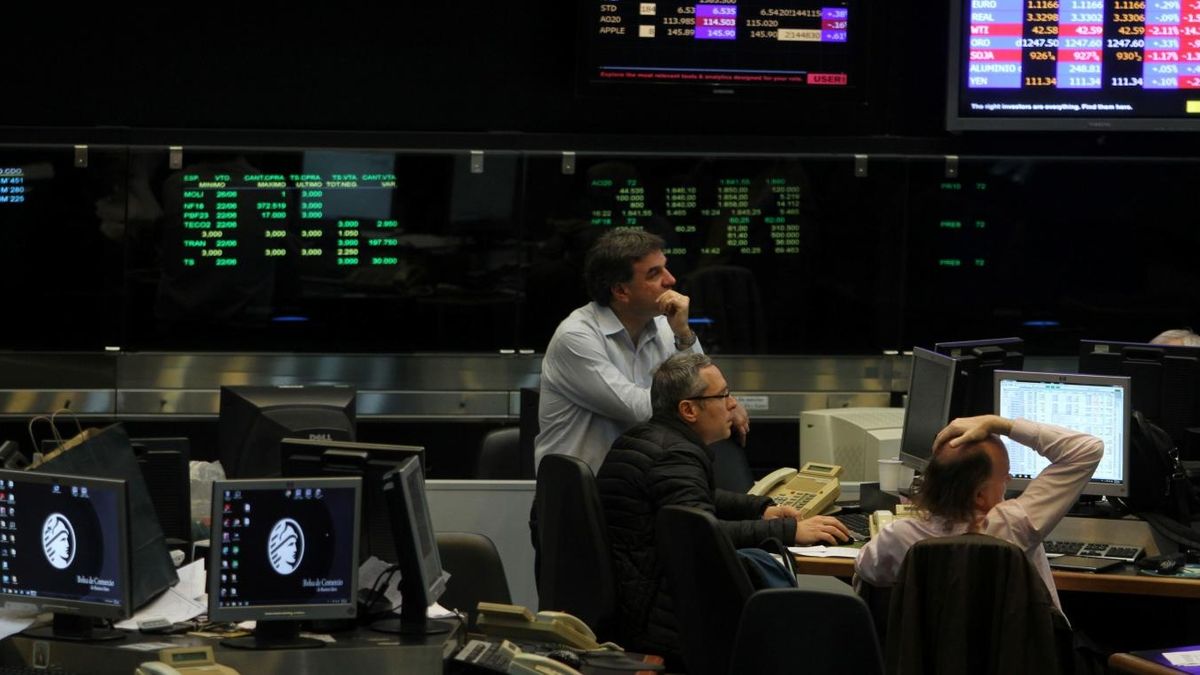On the last day of the month, bonds in dollars closed with falls of up to 6.8% (Bonar 2035).
On average, local law bonds fell 9% in dollars and foreign law bonds 12%, “thus signaling the closure of the position of investors who cannot operate under local law,” they explained from the market.
A) Yes, the Argentine country risk measured by the JP Morgan bank accumulated a increase of 17.9% (+427 points) in the month, to overcome this Friday 2,800 units: Ended at 2,812, the highest in more than two months.
Compared to the Emerging Markets ETF (the EMB), which fell by 7%, it can be concluded that the local context still plays against without palpable improvements in certain indicators, such as inflation.
In the global economic framework, fears of a recession in a context of rising interest rates to alleviate inflation created a marked aversion to risk at a time of firm dollar strength.
Within the fixed income segment, “sovereign bonds in dollars were the hardest hit in an adverse context for emerging markets, where the US Federal Reserve announced that it will continue with a restrictive monetary policy until 2024, a dollar rising, and that the possibilities of global recession lead to a movement of capital towards safer markets”, commented Maximiliano Donzelli, Head of Research at IOL investonline.
Regarding debt in pesos, the Dual Bonuses were the biggest gainers of the month, with average gains of 8.5%, followed by titles Dollar-Linkedwhich increased 8% on average, which shows that the market continues to position itself defensively against a possible devaluation, despite the success in terms of reserves accumulated by the dollar Soybeans: in September the Central Bank bought almost US$5 billion in net form, an unprecedented figure for a month since registration.
In the meantime, CER debt accumulated a 7% point-to-point increase in the month, close to the inflation projected for September.
“The long part of the curve was above 7%, thus giving signs of a market that is beginning to see a positive position after 2024. This was particularly reflected in the last auction of the month where the most requested instrument was the Dual maturing in February 2024. The Badlar saw a smaller increase in their price, in a scenario where the last rate hike has already been discounted and it is not clear in the future if this measure will continue given the strong increase in remunerated liabilities this month”, Dozelli added.
S&P Merval
in the stock market, the leading benchmark S&P Merval gained 0.8% to 139,115.09 points, based on improvement in local ADRs listed in New York.
Thus, throughout the month the leading panel noted a tepid improvement of 2.1% in pesos, and a fall of 3.1% measured in CCL dollars (it closed slightly above 450 points).
A Unlike what happens with the North American indices (they sink up to 33.5% in the year), so far in 2022, the Buenos Aires Stock Exchange remains solid, up 7.4% in hard currency.
Going to analyze the performance in pesos of Argentine assets, the largest monthly increases were recorded by YPF (+20.8%), Transportadora Gas del Sur (+16.5%) and Central Puerto (+11.3%).
ADRs
Meanwhile, the Argentine shares that operate on Wall Street ended the round with the majority of increases, led by Central Puerto (+2.2%), Corporation America (+2%). Meanwhile, the losses were recorded by the actions of Pampa Energia (-1.3%); Tenaris (-1.1%) and Banco Macro (-1%).
During September, the Argentine papers registered disparate variations. The greatest advances were evidenced YPF (+13.1%); and Transportadora de Gas del Sur (+11.8%). Instead, the main casualties were recorded by take off (-27.9%); and Cresud (-12.6%).
Cedears
Under a challenging outlook for the US stock market, where the main indices fell as much as 10.5% (Nasdaq), some Cedears managed to avoid the negative weather, ending with interesting gains during September.
The company that rose the most during the ninth month of the year, in contrast to the rest of the market, was the social network Twitter (+18.2%). The price of the shares of this company is very aware of what ends up happening with the trial between the company and the CEO of Tesla, Elon Musk, for the failed acquisition of the company by some US$44 billion.
Second, it appears Netflix (9.4%), before a slight recovery after what was a very bad year for the titles of the streaming platform. “There is some optimism regarding the company’s project to launch a lower-cost, ad-supported Netflix subscription tier, which could help increase revenue,” Donzelli said.
The podium was completed Johnson & Johnson (+6.6%), firm in the pharmaceutical sector, an industry that tends to perform better during a bear market and a slowing economy.
wall street
September was marked by a sharp decline in the US stock market and a strengthening of the dollar globally. The main trigger of this bad mood in the stock market was the decision carried out by the monetary policy committee of the United States Federal Reserve (Fed) in its last meeting, where it ruled a new rise in the monetary policy rate, in this case, of 75 basic points. However, the most determining factor was not the new higher rate level, but the harsh character of the speech of the members of the committee.
The Fed talked about its policy will remain aggressive assuming that an early easing could have negative impacts on inflationary dynamics. Regarding the latest data, in August, The Consumer Price Index (CPI) of the United States marked a monthly increase above that expected by the market. In turn, in year-on-year terms, inflation was established at 8.3%.
“The Fed’s long-term inflation target is 2% a year, so despite coming down from its peak for the year in June, US inflation is still well above that target.” , noted an operator.
It is in this context that the three main Wall Street indices returned to operate with losses in the ninth month of the year. The S&P 500 ended the month with a negative variation of 9.3%, accumulating a drop of 25.2% in 2022.
In the case of Nasdaq 100the popular index of technology companies, the debacle was even more pronounced, reaching 10.5% and 33.5% for the year.
For his part, the dow joneswas once again the least volatile index of the three and ended the month with a fall of 8.8% and 21.47% from January to now.
Source: Ambito
David William is a talented author who has made a name for himself in the world of writing. He is a professional author who writes on a wide range of topics, from general interest to opinion news. David is currently working as a writer at 24 hours worlds where he brings his unique perspective and in-depth research to his articles, making them both informative and engaging.




